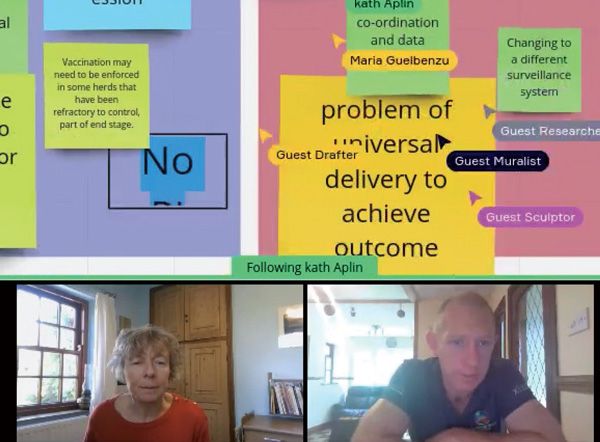Looking to next stage in our BVD eradication journey
The 2021 BVDzero Congress took place virtually in July and, although this meant not getting together in person, it did allow delegates from around the world to attend. The live sessions attracted over 200 people from throughout Europe, South America, New Zealand and Australia as well as closer to home with vets and farmers from Ireland and all parts of the UK being represented
Event organiser, Matt Yarnall from Bovela makers, Boehringer Ingelheim Animal Health said: “The topic covered by all of the speakers was BVD eradication – some speaking about long-established schemes due to come to an end soon, and others discussing launching a programme and achieving early engagement.”
Final phase of programme approaches
Conor Geraghty from Animal Health Ireland’s BVD Implementation Group and President of Veterinary Ireland, who has been involved with the scheme since its inception, took part in the live sessions during the conference and addressed how to deal with the tail end of an eradication programme.
“Modelling acknowledged that the requirements of the scheme would have to get tighter as the BVD eradication journey in Ireland nears the end,” he said. “Ireland is aiming to be BVD-free within 18 months so a ‘circuit breaker’ approach was implemented. It was estimated that around 250 herds would either have a breakdown in 2021 or fall into the category of never having successfully managed BVD.
“In seeking to accelerate progress in the last stages of the scheme, additional biosecurity visits, vet-administered vaccination and herd record-checking would be funded,” Dr Geraghty explained. ‘As the number of herds where this approach was predicted to be beneficial was quite low, funding was secured, which is something that we could have struggled with earlier in the scheme.”
Getting the balance right
Ramping up the rate of progress in the final months of the scheme was seen as important for the wider industry too. Although it will take Ireland longer to become officially BVD-free than originally projected, Dr Geraghty stressed that it was important to get the balance right.
“Being BVD-free is important for Ireland in terms of trade. BVD was one of the first schemes AHI worked on and it was essential to win farmers’ hearts and minds throughout,” he said.
“Not over-promising at the outset is a key factor, as is demonstrating that all the stakeholders can work together towards one goal.”
Dr Geraghty added: “Showing continued progress is hugely beneficial and, when having to introduce stringent measures at the end of the scheme, coaxing producers through and keeping an eye on the long-term goal certainly pays off.”
Issue of PI retention
Dr Maria Guebenzu, BVD programme manager for AHI explained that, as of December 31, 2020, there were only 14 PIs alive in 13 herds in Ireland, with only six being retained for more than three weeks.
“This means that there were many counties free of BVD, but does highlight the issue of PI retention,” she said. “This was studied, especially around the impact on the following calving season. What it found was that, if retention rates were high, eradication would be a long and slow journey but if PI eradication was sped up, this could be achieved much more rapidly.”
Since the change in legislation and with the new restrictions imposed, the average time PIs are kept on-farm is now two days (2021) compared to 12 days in 2018.
As was emphasised by some of the other regional schemes, Dr Geubenzu remarked that the network of laboratories, clear and simple legislation, a useable database and financial support for the removal of PIs have all come together for those producers requiring extra input as the BVD eradication scheme enters its final few months in its current guise.

Top: Some of the ‘stickie’ comments that delegates added to the online discussion at the Congress. Below: Moderator Kath Aplin in virtual conversation with (right) President of Veterinary Ireland, Dr Conor Geraghty of Animal Health Ireland’s BVD Implementation Group.
Implementation of final stage
Policy-makers in Ireland are developing a phased approach of implementing the final stage that will combine bulk milk and young stock screening, abattoir testing, first lactation tests and risk-based surveillance.
Commenting on the congress, Matt Yarnall said: “BVD eradication is at very different stages throughout the UK and beyond so being able to hear the lessons learned from Ireland was hugely valuable to delegates attending, many of whom were programme stakeholders and policy-makers. As congress organisers, we were delighted to have input from Ireland, all parts of the UK, Spain, Germany and Switzerland, all of whom are at very different stages in their BVD eradication journeys.”
















